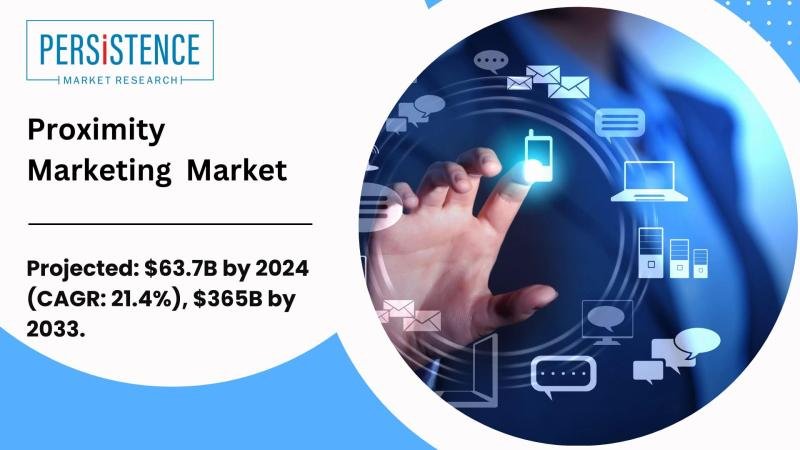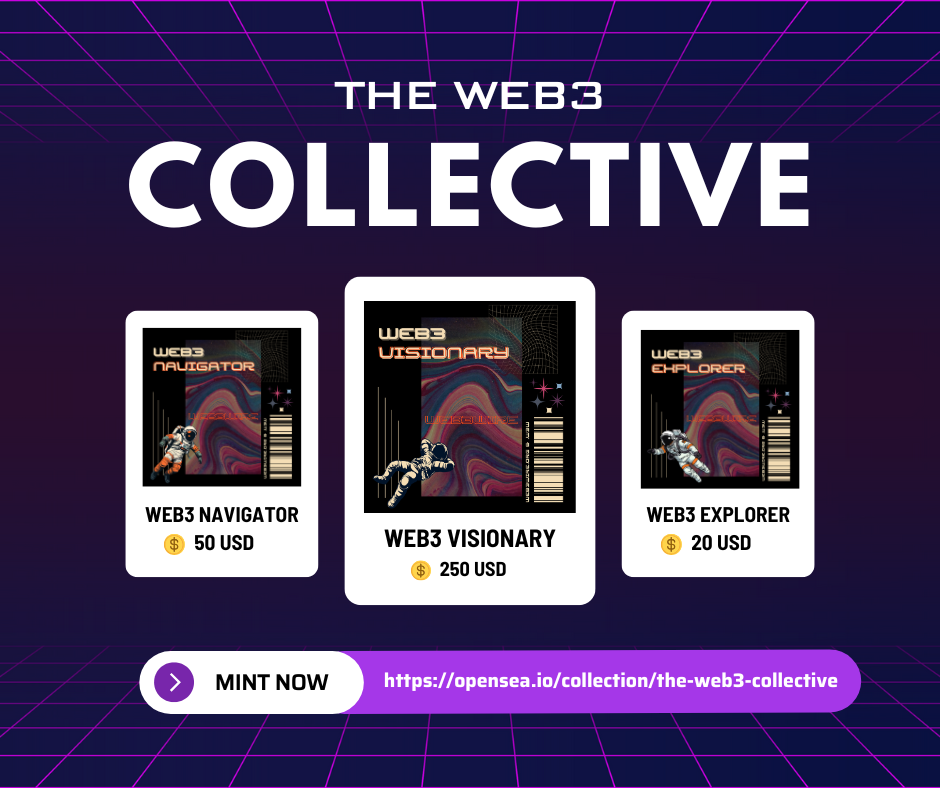The global proximity marketing market, valued at USD 63.7 billion in 2024, is projected to reach USD 365 billion by 2033, growing at a CAGR of 21.4%. Proximity marketing, or hyperlocal marketing, enables businesses to deliver highly targeted advertising within a specific geographic area, using technologies like Bluetooth, Wi-Fi, NFC, and GPS. This approach enhances customer engagement through personalized promotions, games, and coupons, particularly in industries like food service and retail. With the increasing use of smartphones and the integration of marketing channels such as mobile apps and social media, proximity marketing is becoming a powerful tool for businesses to reach digitally connected consumers in real-time.
𝐆𝐞𝐭 𝐚 𝐒𝐚𝐦𝐩𝐥𝐞 𝐑𝐞𝐩𝐨𝐫𝐭: https://www.persistencemarketresearch.com/samples/33468
𝐏𝐫𝐨𝐱𝐢𝐦𝐢𝐭𝐲 𝐌𝐚𝐫𝐤𝐞𝐭𝐢𝐧𝐠: 𝐀 𝐆𝐚𝐦𝐞-𝐂𝐡𝐚𝐧𝐠𝐞𝐫 𝐟𝐨𝐫 𝐁𝐮𝐬𝐢𝐧𝐞𝐬𝐬𝐞𝐬 𝐚𝐧𝐝 𝐂𝐨𝐧𝐬𝐮𝐦𝐞𝐫𝐬
Proximity marketing involves delivering targeted content, advertisements, or promotions to consumers based on their physical location through technologies like Bluetooth, Wi-Fi, and Near Field Communication (NFC). By utilizing sensors and location-based data, businesses can send customized messages or offers to consumers when they are in close proximity to a store, product, or service.
This level of precision enables brands to engage with consumers at the right moment, whether in a retail store, shopping mall, airport, or any other location, leading to a more personalized and relevant marketing experience. As a result, businesses are seeing improved customer retention rates, increased foot traffic, and higher conversion rates.
For consumers, proximity marketing brings about a more seamless and personalized shopping journey. They receive tailored offers based on their preferences, behaviors, and current location, enhancing their overall experience and satisfaction.
𝐊𝐞𝐲 𝐃𝐫𝐢𝐯𝐞𝐫𝐬 𝐨𝐟 𝐏𝐫𝐨𝐱𝐢𝐦𝐢𝐭𝐲 𝐌𝐚𝐫𝐤𝐞𝐭𝐢𝐧𝐠 𝐆𝐫𝐨𝐰𝐭𝐡
Several factors are contributing to the rapid expansion of the proximity marketing market. The increasing adoption of smartphones, wearables, and other smart devices is a key enabler. As more consumers rely on mobile devices for shopping, browsing, and entertainment, businesses are able to leverage this connectivity to drive more meaningful interactions.
The proliferation of location-based services (LBS) is another important driver. With the advent of GPS, Bluetooth Low Energy (BLE), and beacon technology, businesses can now track consumers’ movements in real time, making it easier to deliver contextually relevant content. Additionally, advances in artificial intelligence (AI) and machine learning (ML) are allowing for better data analysis, enabling businesses to predict customer preferences and behaviors more accurately.
The COVID-19 pandemic also played a significant role in accelerating the adoption of proximity marketing. As businesses increasingly turned to contactless solutions, proximity marketing became a way to deliver personalized experiences without physical interaction, ensuring safety while driving engagement.
𝐓𝐞𝐜𝐡𝐧𝐨𝐥𝐨𝐠𝐢𝐜𝐚𝐥 𝐀𝐝𝐯𝐚𝐧𝐜𝐞𝐦𝐞𝐧𝐭𝐬 𝐅𝐮𝐞𝐥𝐢𝐧𝐠 𝐌𝐚𝐫𝐤𝐞𝐭 𝐄𝐱𝐩𝐚𝐧𝐬𝐢𝐨𝐧
One of the most notable technological advancements driving the growth of proximity marketing is Bluetooth Low Energy (BLE) technology. BLE beacons are small, energy-efficient devices that transmit signals to nearby smartphones or devices, enabling businesses to send targeted messages or alerts. BLE’s low power consumption and long-range capabilities make it an ideal solution for proximity marketing in a variety of industries.
In addition to BLE, Near Field Communication (NFC) technology is gaining traction in proximity marketing. NFC allows consumers to simply tap their smartphones on NFC-enabled tags to access information, make payments, or redeem offers. This ease of use and convenience have made NFC a popular choice in industries such as retail, hospitality, and transportation.
Wi-Fi-based proximity marketing is also becoming more common. Many businesses already have Wi-Fi networks in place, and by utilizing this infrastructure, they can track consumer behavior and offer tailored marketing content. Wi-Fi-based systems can provide more detailed analytics, including dwell time, foot traffic patterns, and conversion rates.
𝐏𝐫𝐨𝐱𝐢𝐦𝐢𝐭𝐲 𝐌𝐚𝐫𝐤𝐞𝐭𝐢𝐧𝐠 𝐢𝐧 𝐑𝐞𝐭𝐚𝐢𝐥: 𝐑𝐞𝐯𝐨𝐥𝐮𝐭𝐢𝐨𝐧𝐢𝐳𝐢𝐧𝐠 𝐭𝐡𝐞 𝐒𝐡𝐨𝐩𝐩𝐢𝐧𝐠 𝐄𝐱𝐩𝐞𝐫𝐢𝐞𝐧𝐜𝐞
Retail is one of the biggest sectors benefiting from proximity marketing. Retailers are leveraging location-based advertising to increase foot traffic, drive sales, and build brand loyalty. By sending real-time notifications or promotions to customers’ smartphones as they walk past a store or a specific product, retailers can encourage immediate purchases.
For instance, a customer walking by a clothing store might receive a message offering a discount on a specific item or a reminder of an ongoing sale. This personalized approach makes the shopping experience more dynamic and responsive, fostering stronger connections between consumers and brands.
Additionally, proximity marketing allows retailers to gather valuable insights into customer behavior. By tracking customer movements and interactions with in-store displays, businesses can optimize store layouts, product placements, and marketing strategies. This data-driven approach ensures that retailers can fine-tune their marketing efforts for maximum impact.
𝐓𝐡𝐞 𝐑𝐨𝐥𝐞 𝐨𝐟 𝐏𝐫𝐨𝐱𝐢𝐦𝐢𝐭𝐲 𝐌𝐚𝐫𝐤𝐞𝐭𝐢𝐧𝐠 𝐢𝐧 𝐄𝐯𝐞𝐧𝐭𝐬 𝐚𝐧𝐝 𝐄𝐧𝐭𝐞𝐫𝐭𝐚𝐢𝐧𝐦𝐞𝐧𝐭
Proximity marketing is also transforming the events and entertainment industry. From conferences and trade shows to sports events and concerts, proximity marketing enables event organizers to engage with attendees in innovative ways. By sending event schedules, exclusive offers, or sponsor messages to attendees’ smartphones based on their location, organizers can enhance the attendee experience and increase engagement.
For example, an attendee at a trade show might receive a notification about a product demonstration happening nearby or be informed of a session starting in the next room. This level of convenience and personalization helps attendees make the most of their time at the event, driving higher satisfaction rates.
In the entertainment sector, proximity marketing is being used to deliver tailored content, such as behind-the-scenes footage or special offers, to moviegoers, concertgoers, and theme park visitors. By leveraging proximity marketing, entertainment providers can offer unique experiences that encourage customer loyalty and repeat visits.
𝐂𝐡𝐚𝐥𝐥𝐞𝐧𝐠𝐞𝐬 𝐚𝐧𝐝 𝐏𝐫𝐢𝐯𝐚𝐜𝐲 𝐂𝐨𝐧𝐜𝐞𝐫𝐧𝐬 𝐢𝐧 𝐏𝐫𝐨𝐱𝐢𝐦𝐢𝐭𝐲 𝐌𝐚𝐫𝐤𝐞𝐭𝐢𝐧𝐠
While the proximity marketing market shows immense promise, there are challenges and concerns that need to be addressed. One of the primary concerns is privacy. As proximity marketing relies on location-based data, there are potential risks regarding how consumer data is collected, stored, and used.
To address these concerns, businesses must ensure that they comply with data protection regulations such as the General Data Protection Regulation (GDPR) in the European Union and the California Consumer Privacy Act (CCPA) in the United States. Transparency about data usage, user consent, and the ability to opt-out are crucial in building consumer trust.
Another challenge is the need for businesses to maintain a seamless and non-intrusive customer experience. Overloading consumers with constant notifications or irrelevant offers could lead to frustration and disengagement. Companies must find the right balance between personalization and respect for consumers’ time and attention.
𝐅𝐮𝐭𝐮𝐫𝐞 𝐎𝐮𝐭𝐥𝐨𝐨𝐤: 𝐏𝐫𝐨𝐱𝐢𝐦𝐢𝐭𝐲 𝐌𝐚𝐫𝐤𝐞𝐭𝐢𝐧𝐠’𝐬 𝐏𝐚𝐭𝐡 𝐭𝐨 $𝟑𝟔𝟓 𝐁𝐢𝐥𝐥𝐢𝐨𝐧
The proximity marketing market’s robust growth trajectory reflects the increasing demand for personalized, location-based interactions between brands and consumers. With the global market expected to reach $365 billion by 2033, businesses that harness the power of proximity marketing are poised to gain a competitive edge in their respective industries.
As technologies continue to evolve and consumer preferences become more data-driven, proximity marketing will play an even greater role in shaping the future of retail, entertainment, and advertising. By providing businesses with the tools to connect with customers at the right time and place, proximity marketing is revolutionizing how brands engage with their audiences.
As companies continue to invest in these innovative marketing strategies, the proximity marketing market will remain a key growth area in the digital marketing landscape, offering exciting opportunities for businesses to thrive in the coming decade.
𝐑𝐞𝐚𝐝 𝐌𝐨𝐫𝐞 𝐓𝐫𝐞𝐧𝐝𝐢𝐧𝐠 “𝐏𝐌𝐑 𝐄𝐱𝐜𝐥𝐮𝐬𝐢𝐯𝐞 𝐀𝐫𝐭𝐢𝐜𝐥𝐞”:
https://www.linkedin.com/pulse/unified-endpoint-management-market-reach-us-1958-wpcrf
https://www.linkedin.com/pulse/penetration-testing-service-market-projected-reach-tdffc
https://www.linkedin.com/pulse/current-transducer-market-hit-10569-mn-2031-44-cagr-o6pyc
https://www.linkedin.com/pulse/us-industrial-enzymes-market-set-hit-21-hsqtc
https://www.linkedin.com/pulse/cloud-based-cold-chain-management-market-reach-dgmrc
𝐂𝐨𝐧𝐭𝐚𝐜𝐭 𝐔𝐬:
Persistence Market Research
G04 Golden Mile House, Clayponds Lane
Brentford, London, TW8 0GU UK
USA Phone: +1 646-878-6329
UK Phone: +44 203-837-5656
Email: sales@persistencemarketresearch.com
Web: https://www.persistencemarketresearch.com
𝐀𝐛𝐨𝐮𝐭 𝐏𝐞𝐫𝐬𝐢𝐬𝐭𝐞𝐧𝐜𝐞 𝐌𝐚𝐫𝐤𝐞𝐭 𝐑𝐞𝐬𝐞𝐚𝐫𝐜𝐡:
At Persistence Market Research, we specialize in creating research studies that serve as strategic tools for driving business growth. Established as a proprietary firm in 2012, we have evolved into a registered company in England and Wales in 2023 under the name Persistence Research & Consultancy Services Ltd. With a solid foundation, we have completed over 3600 custom and syndicate market research projects, and delivered more than 2700 projects for other leading market research companies’ clients.
Our approach combines traditional market research methods with modern tools to offer comprehensive research solutions. With a decade of experience, we pride ourselves on deriving actionable insights from data to help businesses stay ahead of the competition. Our client base spans multinational corporations, leading consulting firms, investment funds, and government departments. A significant portion of our sales comes from repeat clients, a testament to the value and trust we’ve built over the years.
This release was published on openPR.














